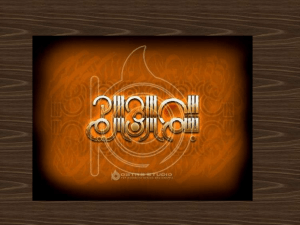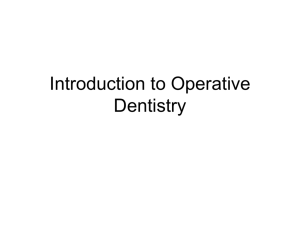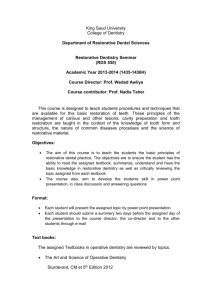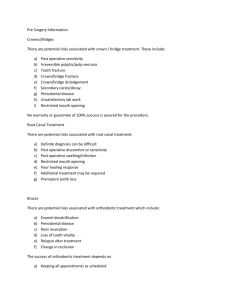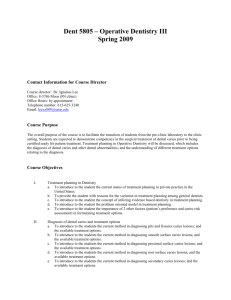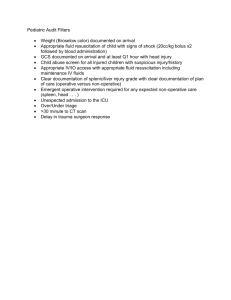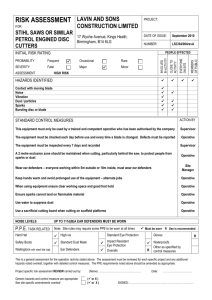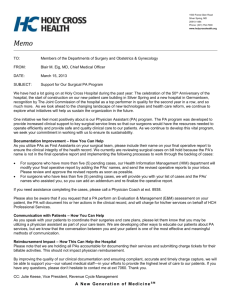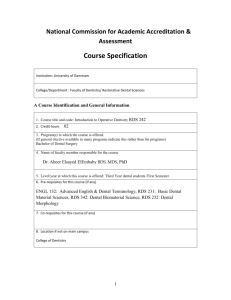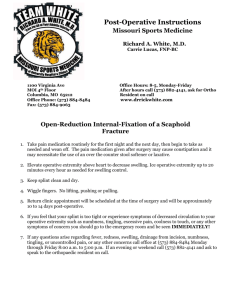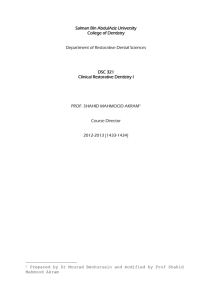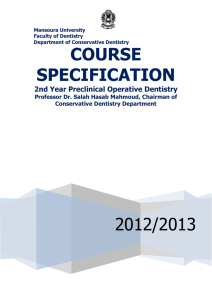Operative Dentistry Syllabus - UTech Jamaica DMD Program
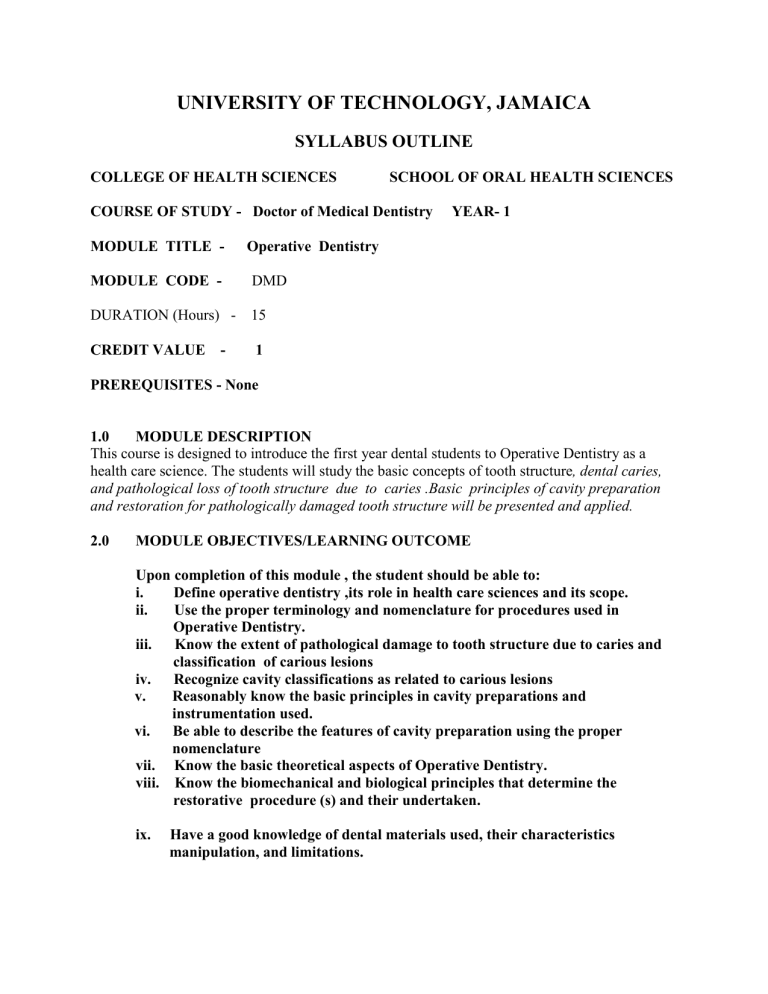
UNIVERSITY OF TECHNOLOGY, JAMAICA
SYLLABUS OUTLINE
COLLEGE OF HEALTH SCIENCES SCHOOL OF ORAL HEALTH SCIENCES
COURSE OF STUDY - Doctor of Medical Dentistry YEAR- 1
MODULE TITLE - Operative Dentistry
MODULE CODE DMD
DURATION (Hours) - 15
CREDIT VALUE - 1
PREREQUISITES - None
1.0
MODULE DESCRIPTION
This course is designed to introduce the first year dental students to Operative Dentistry as a health care science. The students will study the basic concepts of tooth structure , dental caries, and pathological loss of tooth structure due to caries .Basic principles of cavity preparation and restoration for pathologically damaged tooth structure will be presented and applied.
2.0
MODULE OBJECTIVES/LEARNING OUTCOME
Upon completion of this module , the student should be able to:
i. Define operative dentistry ,its role in health care sciences and its scope.
ii. Use the proper terminology and nomenclature for procedures used in
Operative Dentistry.
iii. Know the extent of pathological damage to tooth structure due to caries and
classification of carious lesions
iv. Recognize cavity classifications as related to carious lesions v. Reasonably know the basic principles in cavity preparations and
instrumentation used. vi. Be able to describe the features of cavity preparation using the proper
nomenclature
vii. Know the basic theoretical aspects of Operative Dentistry. viii. Know the biomechanical and biological principles that determine the
restorative procedure (s) and their undertaken. ix. Have a good knowledge of dental materials used, their characteristics
manipulation, and limitations.
3.0 MODULE CONTENT AND CONTEXT
3.1 INTRODUCTION TO OPERATIVE DENTISTRY (Wk.1)
A .Operative Dentistry Procedures
B. Materials used in Operative Dentistry
C. Parameters of Operative Dentistry
D. Parameters of Restorative Dentistry
3.2 PREVENTION OF DENTAL DISEASE (Wk. 1)
A.
Control Measures
B.
Caries Prevention
C.
Dental Examination
D.
Preliminary Treatment
3.3
CLASSIFICATION OF CAVITIES AND RESTORATIONS (Wk. 2)
A. Types of Lesions Involved in Tooth Destruction
B. Anatomic Classification of Cavities
C. Black’s Classification
D. Auxiliary Classifications
3.4 INSTRUMENTS AND AGENTS FOR SHAPING TOOTH SUBSTANCE (Wk.2)
A.
Hardness of Material
B.
Classification of Rotating Instruments
C.
Classification According To Speed Range
D.
Dental Burs ,Stones, Abrasives And Polishing Agents
E.
Hand Instruments
3.5 BIOLOGICAL ASPECTS OF OPERATIVE PROCEDURES (Wk.3)
A.
Periodontium
B.
Enamel
C.
Dentin
D.
Pulp
E.
Operative Injuries To Dentin
F.
Dehydration
G.
Thermal Conductivity
H.
Chemically Induced Irritation
I.
Non-Vital Teeth
J.
Occlusal Considerations
3.6 ESTHETIC CONSIDERATIONS IN OPERATIVE DENTISTRY (Wk.3)
A.
Shape And Position Of Teeth
B.
Gender Considerations
C.
Discolored Teeth
D.
Metallic Restorative Materials
E.
Absence Of Teeth
F.
Esthetics For Operative Procedures
3.7 INSTRUMENT GRASPS (Wk. 4)
A.
Hand Position
B.
Mirrors
C.
Operating Positions
3.8
LINERS AND CEMENTS (Wk.4)
A.
Cleansing The Preparation Surface
B.
Liners And Bases
C.
Types Of Cements
3.9 PLACEMENT OF LINERS AND BASES (Wk. 5)
A.
Armamentarium For Bases And Luting
B.
Procedures For Bases
C.
Procedures For Luting
3.10 TREATMENT OF THE CARIOUS LESION (Wk.5)
A.
Steps In Cavity Preparation
B.
Treatment Of Moderate Carious Lesions
C.
Mechanics Of Caries Removal
D.
Treatment Of The Deep Carious Lesion
E.
Treatment Alternatives
F.
Diagnosis And Treatment Planning
G.
Treatment Of exposed Pulp
H.
Direct Pulp Capping
I.
Indirect Pulp Capping
J.
Direct Versus Indirect Pulp Capping
K.
Fluoride Therapy In The Operatory
3.11 ISOLATION OF THE WORKING FIELD (Wk.6)
A.
Rubber Dam
B.
Selection Of Materials
C.
Placement
D.
The Preparation
E.
The Application
F.
Stabilization
G.
Removal Of The Dam
3.12
TOOTH COLORED RESTORATIONS (Wk.6)
A .Restorative Materials
Unfilled Resins
Composite Resins
Properties
B. Treatment Selection
Indications For Resin Restorations
Contraindications For Resin Restorations
D.
Shade Selection
E.
Cavity Preparation
F.
Hand Instruments
G.
Etchants And Bonding Agent
H.
Dentin And Pulp Protection
I.
Placing The Restoration
J.
Polymerization With Ultraviolet Light
K.
Silicate Cement
L.
Finishing Of Resin Restoration
M.
Eroded Lesions
3.13
THE AMALGAM RESTORATION TOOTH PREPARATION (Wk.7)
A.
Tooth Preparation
B.
Restoration Classifications
C.
Amalgam Full Crown And Cusp Restoration
D.
Incipient Class II Amalgam
E.
Miscellaneous Consideration
3.14
AMALGAM RESTORATION INSERTION AND FINISH (Wk.8)
A.
Specifications Of A Matrix
B.
Application
C.
Armamentarium
D.
Non-Yielding Matrix Application
E.
Sequence Of Application
F.
Miscellaneous Matrix Maneuvers
G.
Wedges
3.15
AMALGAM : PHYSICAL PROPERTIES AND GENERAL CONSIDERATIONS
(Wk.9)
A.
The Alloy
B.
Setting Reaction
C.
High Copper Alloys
D.
Physical Properties
E.
Dimensional Change
F.
Strength
G.
Flow And Creep
H.
Condensation And carving
I.
Polishing
J.
Miscellaneous Considerations
3.16
RETENTIVE PINS IN OPERATIVE DENTISTRY (Wk.10)
A.
The Twist Drill
B.
Retentive Pin
C.
Dentin As An Anchorage Medium
D.
Drilling And Pin Insertion
E.
Pulpal Penetration
F.
Periodontal Perforation
G.
Sizes, Numbers And Locations Of Pins
3.17 DIRECT GOLD AS A RESTORATIVE MATERIAL (Wk. 10)
A.
General Considerations
B.
Types Of Direct Gold
C.
Finishing Of Direct Gold
D.
Specific Applications Of Direct Gold
E.
Armamentarium
3.18
THE CAST GOLD RESTORATION DESIGN AND PREPARATION (Wk. 11)
A . Indications for Cast Gold Restoration
B. Inlays And Onlays
C. Indications
D. Armamentarium
E. Inlay Preparation
F. Onlay Preparations
G. Partial And Full Crowns
H. Partial And Full Crown Preparations
I. Three Quarter Crown
J. Other Types of Restorations
3.19 THE CAST GOLD RESTORATION IMPRESSIONS (Wk.12)
A.
Impression
B.
Impression Trays
C.
Retraction
D.
Mixing Technique
E.
Occlusal Records
F.
Temporary Or Interim Treatment Preparations
3.20 REINFORCEMENT OF THE ENDODONTICALLY TREATED TOOTH (Wk.12)
A.
Cast Post And Core
B.
Prophylactic Dowel
C.
Miscellaneous Considerations
3.21
THE METAL CERAMIC RESTORATION (Wk.13)
A.
Physical Properties
B.
Pretreatment Diagnosis
C.
Procedure
3.22
NEW TECHNIQUES IN CAVITY PREPARATION (Wk. 13)
A.
Air Abrasion
B.
Laser
3.23 ADDITIONAL NOTES
A.
Clinical Dental Anatomy, Histology, Physiology And Occlusion
B.
Cariology
C.
Infected Dentin And Affected Dentin
D.
Histopathology Of Caries
4.0 LEARNING AND TEACHING APPROACHES
Lecture note:
Power point presentation
35mm slide presentation
Models
Handouts
5.0 ASSESSMENT PROCEDURES
Theory examinations will involve levels I, II and III of the Cognitive Domain; i.e.
Knowledge, Comprehension, Application, Analysis, Synthesis and Evaluation.
The Final grade will be determined by a weight value of :
Biweekly Quizzes - 20%
Class Test - (Wk.7) - 30%
Final Exam -( Wk. 15)- 50% (Mandatory: Passing Score Must Be Received.)
Course Passing Score - 70%
6.0
BREAKDOWN OF HOURS
Classroom lecture/tutorials 15 Hours
Biweekly Quizzes 20 Min.
Class Test 60 min.
Final Exam 60min.
7.0 TEXTBOOKS AND REFERENCES
List as follows:
Required:
1. Textbook of Operative Dentistry - Baum ,Phillips and Lund, 3 rd
ed.,W. B. Saunders
Company
Recommended:
2. Sturdevant’s Art and Science of Operative Dentistry, 4 th
ed.
C.V. Mosby Co.
8.0
NAME OF SYLLABUS WRITTER/DEVELOPER
Dr. R. Anita Salmon
9.0
DATE OF PRESENTATIONS OR REVISION
August 2010
10.0
DATE OF ACCEPTANCE
Programme Director
